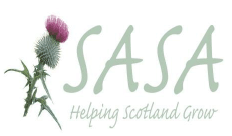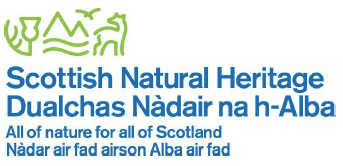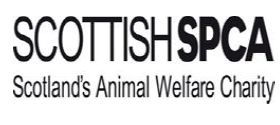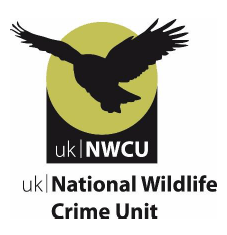Wildlife crime in Scotland: 2017 annual report
The sixth wildlife crime annual report, with new data from the financial year 2016 to 2017.
3. Additional data sources
Chapters three and four include commentary and data provided by other bodies involved in the investigation of wildlife crime in Scotland including government departments, agencies and NGOs. The data provides additional detail on incidents or investigative work to complement the data presented in Chapter two and to help fill in gaps where disaggregation of that data is not possible.
Some of these data sources include incidents that have been reported to stakeholders or detected using their specific expertise.
Police Scotland operate to the Scottish Crime Recording Standard which sets criteria for recording an incident as a crime. There is no requirement for other stakeholders to adhere to the Scottish Crime Recording Standard, therefore there may be variability in the way in which crimes are recorded between the various organisations.
It is possible that, if reported to the Police, some of these incidents would not have been recorded as a crime, or would have been recorded as environmental offences or firearms/shotgun offences depending on the nature of the crime.
Work is on-going to standardise the criteria used among stakeholders for recording of incidents.
3.1 Science and Advice for Scottish Agriculture (SASA)

Science and Advice for Scottish Agriculture (SASA) is a Scottish Government department based in Edinburgh, which as part of its remit, provides several services for wildlife crime investigation.
Wildlife DNA Forensic Unit
Evidence seized by enforcement officers in the course of wildlife crime investigations often contain animal DNA evidence that can be crucial to an investigation – from confirming whether a crime has taken place, to linking a suspect directly to a specific crime scene. The Wildlife DNA Forensic Unit at SASA provides accredited forensic analysis of animal DNA evidence recovered by wildlife crime investigations. Table 8 provides a summary of the range of Scottish casework received in the financial years 2013-14 to 2016-17, divided into the UK wildlife crime priorities.
Table 8: Wildlife DNA Forensic Unit cases from Scotland, 2013-14 to 2016-17
| Category | Scottish cases | |||
|---|---|---|---|---|
| 2013-14 | 2014-15 | 2015-16 | 2016-17 | |
| Badger persecution | 4 | 1 | 0 | 0 |
| Bat persecution | 0 | 0 | 0 | 0 |
| CITES | 1 | 0 | 2 | 1 |
| Freshwater pearl mussels | 0 | 0 | 0 | 0 |
| Poaching and coursing | 6 | 1 | 0 | 3 |
| Raptor persecution | 4 | 10 | 5 | 4 |
| Other wildlife crime | 2 | 0 | 0 | 4 |
| Other (e.g. animal cruelty) | 1 | 2 | 0 | 2 |
| Total | 18 | 14 | 7 | 14 |
Source: SASA
From the most recent set of cases, there were several interesting investigations involving animal DNA analysis. One case recovered dog DNA from a hare that had been coursed, and this could be matched using dog DNA profiling to a suspect’s dog – linking them directly to the crime. Similar techniques were used to link a deer poacher to a crime scene, providing a red deer DNA profile match between carcass remains found at the poaching site to a carcass found at the suspect’s home. Finally, from a raptor persecution case, buzzard DNA was identified within the jaws of a Larsen-mate trap. The results of DNA analysis in these cases can provide investigative leads and answers to investigative questions all of which play a crucial role in advancing an investigation towards prosecution.
Chemistry Branch
The Chemistry Branch at SASA investigates suspected animal poisoning incidents, as part of the Wildlife Incident Investigation Scheme. Table 9 provides details of suspected pesticide incidents investigated in Scotland (2012-13 to 2016-17) and summarises those incidents, categorised as abuse†, that are considered to be wildlife crimes because of the species or pesticide involved. Annually, the branch investigates around 170-230 incidents.
The number of poisoning abuse incidents decreased from 15 in 2015-16 to ten in 2016-17.
Table 9 also includes the numbers of abuse incidents involving suspicious baits or other substances, even if no creature was actually poisoned. Over the five year period, the highest number of recorded abuse incidents involved birds of prey (24) followed by companion animals (17). Bird of prey poisoning incidents are covered further in section 4.7.
Table 9: Pesticide incidents in Scotland 2012-13 to 2016-17
| |
2012-13 | 2013-14 | 2014-15 | 2015-16 | 2016-17 |
|---|---|---|---|---|---|
| Number of incidents investigated during financial year * | 172 | 194 | 192 | 215 | 205 |
| Number of incidents attributed to pesticides | 22 | 18 | 16 | 27 | 20 |
| Category - Abuse | 14 | 13 | 9 | 15 | 10 |
| % abuse | 8% | 7% | 5% | 7% | 5% |
| No. of abuse incidents involving birds of prey | 4 | 6 | 6 | 5 | 3 |
| No. of abuse incidents involving other birds ** | 1 | 2 | 0 | 0 | 1 |
| No. of abuse incidents involving suspicious baits/substances | 5 | 4 | 1 | 3 | 3 |
| No. of abuse incidents involving companion animals | 4 | 1 | 2 | 7 | 3 |
| No. of abuse incidents involving wild mammals | 0 | 0 | 0 | 0 | 0 |
Source: SASA
* Excludes honeybees and incidents where no analyses were undertaken
** No birds of prey associated with these incidents
† Abuse: An investigation into the circumstances of the case concluded that the pesticide(s) involved had been used in breach of their authorisation conditions and that this has been done with the deliberate intent of harming or attempting to harm wildlife or other animals. Where an animal is involved the cause of death has been established as pesticide poisoning.
3.2 SAC Consulting Veterinary Services

SAC Consulting: Veterinary Services (SAC C VS) is a division of Scotland's Rural College (SRUC). While not a government agency, the work of their Veterinary Services team includes post mortem examinations on wild birds (under the Wild Bird Disease Surveillance budget) and on wild mammals (under the Animal Welfare budget). These budgets are funded by Advisory Activity grants-in-aid from the Scottish Government.
Carcase submissions for this wildlife crime summary come, in the main, from Police Scotland. Other substantial contributions come from the Scottish SPCA and RSPB. Small numbers of carcases come from other sources, such as Scottish Natural Heritage, other conservation or wildlife charities, or members of the public. Where the presence of wildlife crime is suspected following post mortem examination in cases submitted by non-law-enforcement agencies, the Police are notified of the outcome to allow investigation to proceed.
In addition to wildlife crime investigation, wild bird carcase submissions in Scotland are used for disease surveillance, notably exotic zoonotic diseases such as avian influenza or West Nile virus. The recent outbreaks of avian influenza in commercial units are an illustration of the need for surveillance for diseases of concern which may be carried by wild birds, particularly given the very long distances involved in migration patterns in some species.
In 2016-17, a total of 172 cases were submitted, of which 49 involved mammals and 123 involved birds. These are shown in Table 10 below. As can be seen from the data in Table 10, the percentage of wild bird submissions suspected to be crime related following post-mortem examination is usually lower than the comparable percentage of mammal cases, which is in accordance with previous trends. There are several factors which may contribute to this difference. Firstly, buzzards tend to predominate the avian submissions by Police - these birds are numerous, and they are also a species known to be persecuted, which may lead to a high rate of report for this particular species by members of the public. Secondly, large bird of prey carcases are noticeable and recognisable for some time after death: the feathers over the carcase can survive for long periods in apparently good condition after death, which can give a superficial appearance of an intact and potentially usable carcase even where there is little to no soft tissue left within. This leads to a higher rate of bird submission in a state of decay beyond analysable viability, leading to a report of “insufficient evidence to ascertain cause of death”.
Table 10: Wildlife cases examined by SAC Consulting Veterinary Services under advisory activity funding, 2012-13 to 2016-17
|
|
2012-13 |
2013-14 |
2014-15 |
2015-16 |
2016-17 |
|---|---|---|---|---|---|
| Total wildlife cases examined as possible wildlife crimes |
137 |
199 |
158 |
225 |
172 |
| Total mammal cases |
48 |
50 |
41 |
45 |
49 |
| Total mammal cases identified by post mortem as crime related |
22 |
25 |
26 |
23 |
11 |
| % of mammal cases identified by post mortem as crime related |
46% |
50% |
63% |
51% |
22% |
| Total bird cases |
89 |
149 |
117 |
180 |
123 |
| Total bird cases identified by post mortem as crime related |
16 |
21 |
30 |
22 |
13 |
| % of bird cases identified by post mortem as crime related |
18% |
14% |
26% |
12% |
11% |
Source: SAC Consulting Veterinary Services
It should be noted that the number of carcases submitted as potential wildlife crimes, and then identified as likely to be such, can depend on many factors, including environmental conditions suitable for preservation of carcases, public awareness of issues surrounding wildlife crime, level of scavenging activity, etc., in addition to levels of wildlife crime committed.
Wild mammalian work in the year 2016-17 has covered a wide range of species including squirrels, hares, otters, badgers, pine martens, foxes, and deer, with dog attack being the most common cause of death or injury. This included suspected badger baiting, hare coursing, hunting deer with dogs, and potentially unintended loss of control of a pet around wildlife.
The avian cases have covered a range of species, though raptors always tend to predominate in cases submitted as suspected wildlife crimes. Causes of death or injury included shooting, poisoning, potential misuse of traps, suspected intentional attack by a person, and similarly via vehicle, and dog attack.
In cases where the cause of death was recorded as "shooting", a mixture of suspected rifle, shotgun and air rifle injuries were represented. Poisoning abuse incidents are confirmed by testing at SASA and so the same cases referred to here also appear in Table 9.
3.3 Scottish Natural Heritage (SNH) – General Licence Restrictions and protected species licensing

As part of a package of anti-wildlife crime measures announced by the Minister for Environment and Climate Change, SNH announced in 2014 that they would prevent the use of general licences to trap or shoot wild birds on land where there is evidence of wildlife crime against birds. Police Scotland
will share information with SNH where it may prove to be of assistance in deciding on the use of these restrictions. The measures were back-dated to 1 January 2014, allowing action to be taken where there is evidence of relevant offences from that date onwards.
SNH published their framework for implementing restrictions on the use of General Licences in October 2014, which was part of a package of measures aimed at tackling raptor persecution. The rationale behind the restriction process was that the light-touch approach to regulation offered by General Licences (where there is no application process, and no significant registration or reporting requirements) would not be appropriate where there has been a loss of confidence, usually in situations where there has been evidence to show that crimes against wild birds have taken place.
SNH meet with Police Scotland and the National Wildlife Crime Unit every three months to review new information on bird crimes in Scotland and to identify any possible cases for future restrictions. Possible cases are reviewed against the criteria set out in the framework document and must be based upon clear evidence of crimes being committed.
Two General Licence restrictions were imposed in November 2015 over four land holdings in the Scottish Borders and Stirlingshire following evidence being received from Police Scotland that crimes against wild birds had been committed. In both cases no criminal prosecutions were brought.
These restrictions prohibit the use of General Licences 01, 02 and 03 and remained in place until 12th November 2018. Maps showing the areas affected by the restrictions were published on the SNH website when they came into effect and remained available for the duration of the restrictions.
Two of the land holdings in the Scottish Borders affected by a General Licence restriction were granted the right to Judicial Review by the Courts. These cases were heard in January 2017, with the Court finding largely in favour of SNH in upholding the General Licence restriction decisions.
Two additional General Licence restrictions were imposed in 2017; one over an area of land in Perthshire, and another to an individual, prohibiting them from using the relevant General Licences. Details of these can be found on the SNH website.
3.4 Police Scotland – firearms licensing
Police Scotland may revoke or refuse the renewal of a shotgun or firearm certificate in circumstances that demonstrate that the holder is no longer deemed to be suitable.
If a firearm certificate holder commits an offence, the Firearms and Explosives Licensing department for the relevant division in which they reside is notified of this and thereafter a report is initiated to examine the person's continued suitability to possess a shotgun or firearm. If a person subsequently has their shotgun or firearm certificate revoked, this would be in terms of the Firearms Act 1968 and not the original offence(s), regardless of the outcome at Court, as they would still have to be assessed on their suitability to possess firearms.
Accordingly revocations and refusals are currently recorded under the Firearms Act 1968 and it is not possible therefore to determine whether wildlife crime offences form part of the suitability consideration process.
3.5 Scottish Society for the Prevention of Cruelty to Animals (Scottish SPCA)

The Scottish Society for the Prevention of Cruelty to Animals (Scottish SPCA) and their Special Investigations Unit (SIU) are able to lead or support certain wildlife crime investigations in Scotland. Powers are granted to suitably trained staff by Scottish Ministers under the Animal Health and Welfare (Scotland) Act 2006.
Scottish SPCA inspectors deal with routine domestic and wildlife welfare cases, however the SIU has a slightly different remit dealing with cases which are linked to illegal activities often involving serious and organised crime groups. SIU deals with both wildlife incidents and incidents involving domestic animals such as dogfighting and the puppy trade. Some of the SIU’s work involves incidents where there is both a domestic animal and wildlife element such as badger baiting. The SIU consists of five inspectors and one intelligence manager.
The SIU receives information (and complaints) from two main sources – the Scottish SPCA animal helpline will alert the SIU to any information that may be of interest, and some information is fed directly to the unit from intelligence sources and other agencies through intelligence logs and reports.
The Scottish SPCA’s animal helpline received over 245,000 calls between April 2016 and March 2017. Through the increase in public knowledge, brought about by marketing campaigns and media focusing on the work of the SIU, an increase in calls was received relating to incidents involving possible wildlife crime. This has led to an increase in the volume of information passed to the SIU in comparison to previous years.
The SIU estimate that between April 2016 and March 2017 they received:
- 401 pieces of information for consideration from the Scottish SPCA helpline
- 475 pieces of information from other sources. Upon investigation, some pieces of information may relate to incidents that may not in fact turn out to be the result of crime, may not actually involve wildlife, or are duplicate pieces of information relating to the same incident
Table 11 provides a further breakdown of incidents where the SIU identified a crime had taken place, including those reported to COPFS, listed under the six UK wildlife crime priority areas. These incidents were for cases investigated solely by the SIU.
Table 11: Wildlife incidents identified by SIU as crimes from April 2016 to March 2017
| Type of wildlife crime | Pieces of information identified as crime | Reported to COPFS |
|---|---|---|
| Badger persecution | 8 | 0 |
| Illegal trade (CITES) | 0 | 0 |
| Raptor Persecution | 10 | 0 |
| Bat Persecution | 0 | 0 |
| Poaching and coursing | 5 | 0 |
| Freshwater pearl mussels | 0 | 0 |
| Other | 17 | 4 |
| TOTAL | 40 | 4 |
Source: Scottish Society for the Prevention of Cruelty to Animals
The incidents in Table 11 also included four relating to trapping or snaring offences.
Significant wildlife cases in 2016-17 included an individual reported for the illegal use of gin traps being used for the trapping of foxes. Gin traps had been used around the entrance to a fox earth. These traps were recovered from the back of the individual’s vehicle. A subsequent search with the Police led to the recovery of a quantity of unsecure firearms and ammunition.
Another case centred on the recovery of illegally set snares and illegal ELgeeco trap within a sporting estate.
The SIU report cases directly to the Crown Office and Procurator Fiscal Service (COPFS). As a result, any crimes or suspected crimes investigated solely by the Scottish SPCA will not appear in the Police recorded crime statistics shown in Table 1 of this report. If reported for prosecution however, they will be included in the COPFS figures and those cases will have been given a Scottish Criminal Records Office (SCRO) number.
Not all incidents identified as crimes will provide sufficient evidence for a prosecution to be progressed to COPFS. Table 12 below shows a five year summary of wildlife related investigations led by the SIU, including those reported to COPFS.
Table 12 also shows the numbers of investigations where the SIU supported investigations led by Police Scotland. A new database was launched in December 2014 allowing more accurate collation data from that point onwards.
Table 12: Wildlife crime investigations dealt with by SIU, 2012-13 to 2016-17
| |
2012-13 | 2013-14 | 2014-15 | 2015-16 | 2016-17 |
|---|---|---|---|---|---|
| Incidents investigated solely by SIU | 54 |
69 |
92 |
96 |
73 |
| Number of cases reported to COPFS | 8 |
10 |
6 |
10 |
4 |
| % reported to COPFS | 15% | 14% | 7% | 10% | 5% |
| Police Scotland-led investigations assisted by SIU | 65 |
70 |
49 |
19 |
42 |
| Total | 119 | 139 | 141 | 115 | 115 |
Source: Scottish Society for the Prevention of Cruelty to Animals
3.6 National Wildlife Crime Unit (NWCU)

The National Wildlife Crime Unit has a dedicated intelligence function. In the 2016-17 year, the following bespoke intelligence analysis was provided for Scotland:
- Update of the Operation Easter target list – to support and direct proactive targeting across Scotland
- Quarterly submission of Organised Crime Groups with links to Scotland
- Five year incident analysis of Badger Persecution for the Badger Priority Delivery Group (including Scottish Badgers data)
- Initial hotspot mapping drafted for the South Scotland Golden Eagle project
- Open Source research carried out for nominals of interest to Police Scotland
- Intelligence database checks for Police Wildlife Liaison Officers across Scotland
- Bespoke Geographical Information Services (GIS) maps to assist active investigations
- Monthly Wildlife Crime Briefing Paper for interest of Police Scotland Wildlife Crime lead
- Taskings for Police Scotland out of the National Strategic Assessment for 2016
- Wildlife Crime input prepared for the Police Scotland monthly Chief Officer Tactical Assessment
In addition, the NWCU’s Scottish Investigative Support Officer (SISO) provides advice and ‘on the ground’ support for wildlife crime investigations. In 2016-17, the NWCU SISO was involved in casework as well as the strategic development of wildlife crime enforcement and intelligence sharing. The SISO gave advice and assistance to Police Scotland Wildlife Crime Liaison Officers and other organisations on numerous occasions and on a variety of subjects including bird, badger, bat, non-native species and pearl mussel crime; traps; fox hunting; wildlife disturbance; coastal crime and issues; environmental disturbance; trading in endangered species (CITES) and the sourcing of expert witnesses.
Throughout the year, contributions were provided to several operations involving
CITES and raptor crime and the annual delivery of Operation Easter to target egg thieves and nest disturbance during the bird breeding season. Crime prevention measures were initiated to mitigate the risks that persecution posed to the South of Scotland Golden Eagle project on both sides of the border. Several searches were undertaken around raptor crime and CITES.
The SISO gave presentations at several events throughout the year including local and national Police training, Sharing Good Practice events, PAW partners and the UK Wildlife Crime Enforcer’s Conference. They also participated in, or wrote, media articles regarding raptor crime and river crime. An on-going element of the role continues to include participation in several PAW Scotland groups (Poaching & Coursing, Media, Freshwater Pearl Mussel and Raptor), Heads up for Harriers project and General Licence restrictions.
The NWCU works with Police Scotland to produce intelligence products which are based upon analysis of intelligence. Table 13 below provides a summary of wildlife crime intelligence logs, broken down by relevant keyword. This table has been included to provide a clearer picture of the spread of wildlife crime intelligence dealt with by Police Scotland and the NWCU and reflects the kind of information which is being reported to the Police.
Table 13: Scottish wildlife crime intelligence logs 2016-17
| Keyword | Intelligence logs | % of total |
|---|---|---|
| Fish | 123 | 17.6% |
| Raptor/Bird of Prey | 22 | 3.1% |
| Deer | 117 | 16.7% |
| Hare | 162 | 23.2% |
| Badger | 30 | 4.3% |
| FWPM/Pearl mussel | 1 | 0.1% |
| CITES | 9 | 1.3% |
| Bat | 0 | 0.0% |
| All 'other' wildlife | 235 | 33.6% |
| Total | 699 |
Source: Scottish Intelligence Database/NWCU (used with permission of Police Scotland)
It should be noted that an intelligence log is not a detected crime but a tool for Police to use to establish a bigger picture of what is happening in a given area. A single incident may generate a number of pieces of intelligence. Intelligence logs cannot be used to (a) directly compare year on year or (b) comment on long term trends, as they are reviewed on a yearly basis and deleted if grounds for inclusion for policing purposes no longer exist. As a result, the number of intelligence logs for any given year decreases over time.
Table 14 provides a summary of the three most common types of priority intelligence log (i.e. not including the ‘Other’ category) held in the database for 2012-13 to 2016-17.
Table 14: Most common priority NWCU intelligence logs 2012-13 to 2016-17
| Year | Three most common priority intelligence types (as a percentage of the total number of intelligence logs) |
|---|---|
| 2012-13 | Fish (17%), deer (17%) and hare (9%) |
| 2013-14 | Fish (20%), deer (16%) and raptor/bird of prey (10%) |
| 2014-15 | Fish (18%), raptor/bird of prey (12%) and deer (11%) |
| 2015-16 | Fish (21%), hare (17%) and deer (16%) |
| 2016-17 | Hare (23%), fish (18%) and deer (17%) |
Source: Scottish Intelligence Database/NWCU (used with permission of Police Scotland)
Contact
Email: Hugh Dignon
There is a problem
Thanks for your feedback